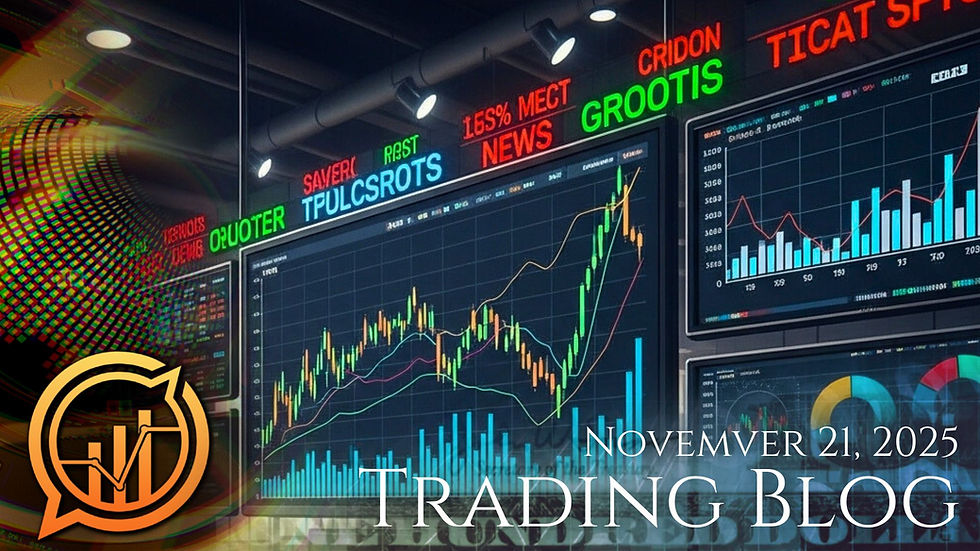What Are Copper and Oil Saying About the Economy?
- Aug 7
- 2 min read
Updated: Aug 7
Here’s the latest snapshot on copper and oil, and what their price movements are signaling about the broader economy:
Current Prices
Copper:
As of August 7, 2025, the price of copper sits around $4.39 per pound (~$9,770 per metric ton), down roughly 22% over the past month, but still up about 4% year-over-year Trading EconomicsYCharts.
Crude Oil (WTI):
Also on August 7, 2025, oil is trading near $63.84 per barrel, down around 6.6% over the past month and 16% year-over-year Trading Economics.
Forecasts suggest Brent crude will average $69/bbl in 2025, potentially dropping to $58/bbl in 2026, driven by inventory builds and production changes U.S. Energy Information Administration.
Since end of Q2 2025, prices have hovered near $70/bbl, supported by lower geopolitical risk after a ceasefire in the Middle East U.S. Energy Information Administration.
Economic Signals from "Doctor Copper"
"Doctor Copper" is a nickname for copper due to its status as a reliable leading indicator of economic activity—rising copper often reflects industrial demand and economic expansion, while declines may signal downturns Investopedia.
Historically, copper price trends have often preceded GDP changes by 3–6 months Discovery Alert.
However, copper’s signaling isn’t foolproof; prices can be skewed by temporary shortages or policy factors like tariffs Investopedia.
Given copper’s recent decline (–22% in a month), this may reflect weaker industrial demand or growth concerns, but supply constraints and inflation-driven dynamics could also be at play.
What's Driving Copper Prices Right Now?
Structural demand: Strong underlying demand continues—renewables, EVs, AI data centers are copper-intensive sectors CME GroupDiscovery Alert.
Supply constraints: New mining projects are slow to come online, and existing mines face challenges, creating tight market dynamics CME GroupDiscovery Alert.
Macroeconomic tailwinds: Inflation (e.g., June CPI) and stagflation fears support copper as a tangible industrial asset and inflation hedge Discovery Alert.
Forecasts remain optimistic: UBS projects copper could reach $11,000 per metric ton by end of 2025, citing supply deficits Investing.com.
Oil as a Complementary Indicator
Historically, oil and copper prices were closely linked because energy costs heavily influence copper production CME Group.
Since 2022, however, this correlation has weakened—copper has trended higher while oil slipped, reflecting diverging demand drivers: technology and electrification boosting copper, while oil faces structural headwinds CME Group.
A recent regression study found oil price changes positively and significantly influence copper prices, confirming some linked momentum Ewa Direct.
Final Take
Copper’s retreat suggests caution—possibly cooling industrial demand or economic uncertainty.
Yet, structural demand and supply pressures hint at longer-term strength ahead.
Oil’s weaker performance reflects energy-market softness, diverging from copper’s outlook.
Together, these moves point toward an economy grappling with transition—modest near-term softness, but solid medium-term demand potential, especially in electrification and infrastructure sectors.




Comments